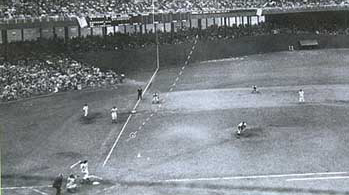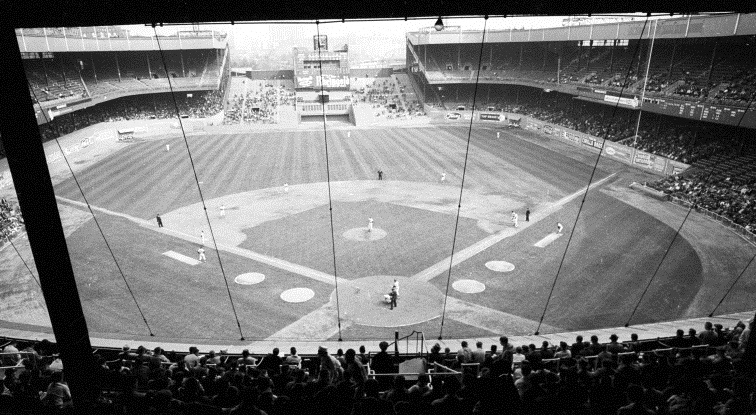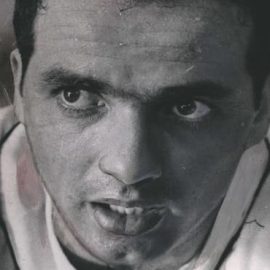For 19 years we’ve known that the infamous “Shot Heard Round the World” winning home run in the 1951 National League playoffs between the New York Giants and Brooklyn Dodgers was a fraud.
 On the front page of the January 31, 2001 edition of the Wall Street Journal reporter Joshua Prager first broke the story by detailing the sign-stealing scheme concocted by Giants manager Leo Durocher, which Durocher personally outlined to his players and coaches in the clubhouse.
On the front page of the January 31, 2001 edition of the Wall Street Journal reporter Joshua Prager first broke the story by detailing the sign-stealing scheme concocted by Giants manager Leo Durocher, which Durocher personally outlined to his players and coaches in the clubhouse.
The Giants had set up a powerful Wollensak telescope secreted in the center field wall of their home park, the Polo Grounds, to steal the signs flashed by opposing catchers to their pitchers.
As Giants coach Herman Franks looked through the Wollensak he pressed an electronic buzzer to relay the pitch selection to a player sitting on the bullpen bench just down the right field line who immediately flashed a sign to Giant batters.
The sign-stealing process took just seconds and it was wildly effective. As Giants pitcher Al Gettel later said, “Every hitter knew what was coming. Made a big difference.”
From the moment the story broke in 2001, the San Francisco Giants mounted a campaign of disinformation and disinterest. The franchise had fully committed to “the shot heard round the world” as being not just the greatest moment in Giants history, but one of the greatest moments in MLB history.
Each year the San Francisco Giants continued to celebrate the 1951 playoff victory over the Dodgers as legitimate history, and their passive cover-up was partially successful. Giant fans were brainwashed into thinking the cheating scheme couldn’t be true, and recently on the MLB Network even personality Matt Vasgersian suggested the Giants 1951 cheating scandal might have been an “urban legend”.
Author Joshua Prager went on to write “The Echoing Green” a brilliantly written and researched book that fully details the Giants’ 1951 sign stealing scheme.
Prager describes the meetings Manager Durocher held with his coaches and players, discovered the type of telescope used and its specs, actually identified the electrician hired to install the system and broke down how the buzzed information was signaled to Giant hitters.
Not only had the Giants used the electronic cheating system during the NL playoffs with the Dodgers, they actually started using it in July 1951 in an attempt to catch the first place Dodgers in the standings.
And the cheating scam paid off big time. In the first half of the 1951 season the Giants went 44-36, in the second half 54-23.
Brooklyn had moved into 1st place in the National League on May 13, 1951 and held on to that lead until the final day of the season. That’s when the Giants finally caught them and both teams finished with identical 96-58 records.
To decide which team would represent the NL in the World Series the two New York teams played a three-game playoff series, which counted as part of the regular season. The first game was played in Brooklyn, the next two at the Giants’ Polo Grounds.
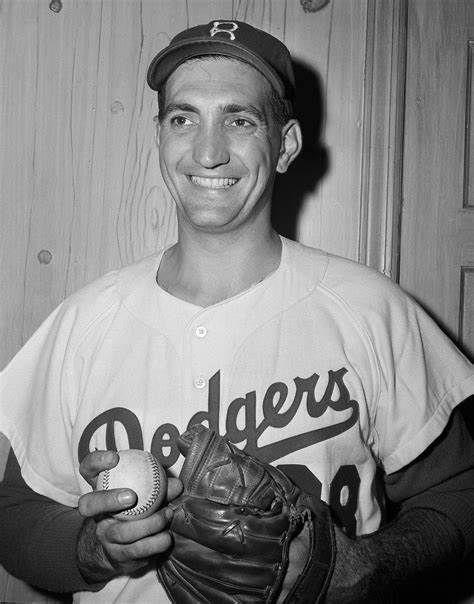
With Dodger pitcher Ralph Branca on the mound, the Giants scored one run, then Bobby Thompson came to the plate and hit a three-run home run to win the game 5-4 and take the playoff series.
Rumors followed for years that the Giants had stolen signs for most of the 1951 season, but nothing could be proven. Until Joshua Prager’s dogged research uncovered virtually all the details of the intricate cheating scandal.
The last refuge for Bobby Thompson after the truth came out was to finally admit that the Giants were electronically stealing signs. But he lamely insisted that he did not get the sign for his famous “shot heard round the world” home run.
“We did steal signs, and I did take some, and I don’t feel good about it. But I didn’t get the sign on that pitch,” Thomson told the Journal News newspaper in 2001.
Shortly before Thompson’s death in 2010, Dodger pitcher Branca told an interviewer about the sign-stealing and Thompson’s homer, “He [Thompson] knew it was coming. Absolutely.”
In 2009, former Giants coach Herman Franks invited author Prager to his home. Franks was 95 years-old and in poor health; he would pass away several weeks later. Franks wanted to finally answer the question whether or not Thompson got the pitch signaled to him before he hit his infamous home run.
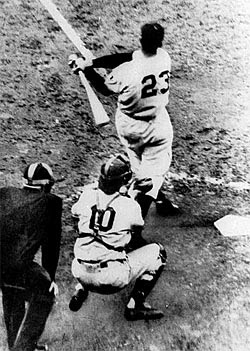
After he buzzed to signal the pitch with Thompson at the plate, Franks told Prager he tilted the telescope up and saw that Thompson was indeed looking down the right field line to get the pitch.
As we follow the 2020 Houston Astros in the aftermath of their own disgraceful 2017-2018 electronic sign-stealing scandal it’s an opportunity to remember the MLB team that pioneered electronic sign stealing: the 1951 New York Giants.
In the 1950s it was much easier to cover up cheating in baseball because of the stranglehold baseball owners had on the game at the time, because the mainstream sport media was more enabling than critical, and because there wasn’t the ubiquitous saturation of social media we have today.
So the fraud of the “shot heard round the world” was allowed to stand for decades, to the shame of baseball and the unjust damage done to the reputations of Ralph Branca and the 1951 Dodgers.
Add The Sports Daily to your Google News Feed!
